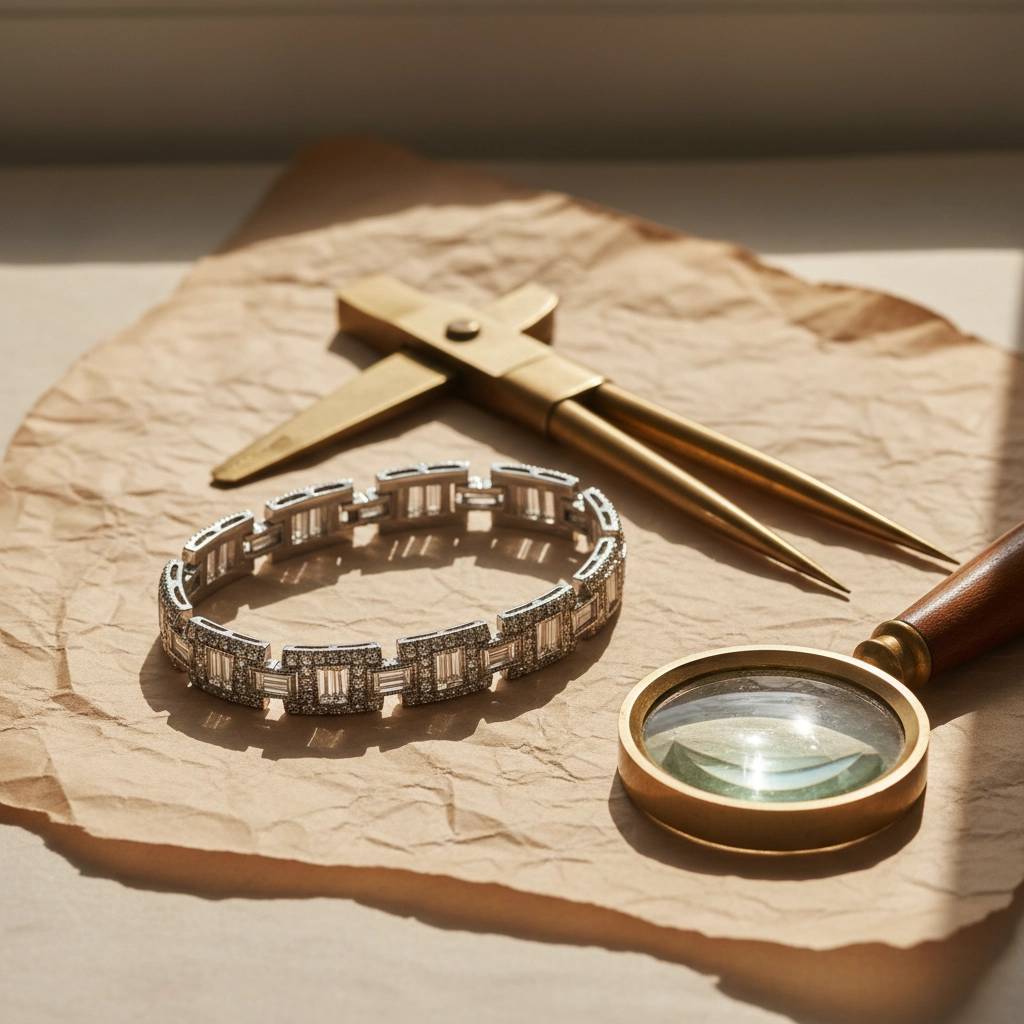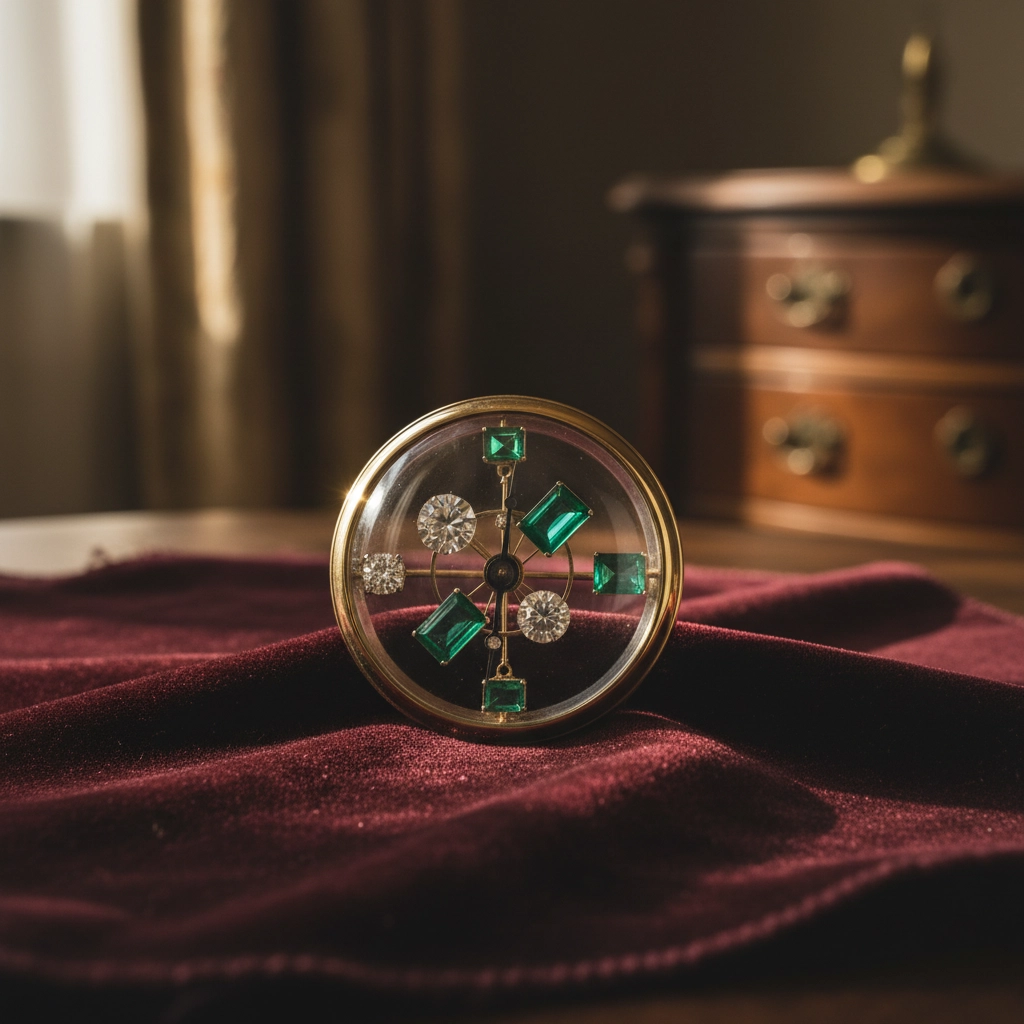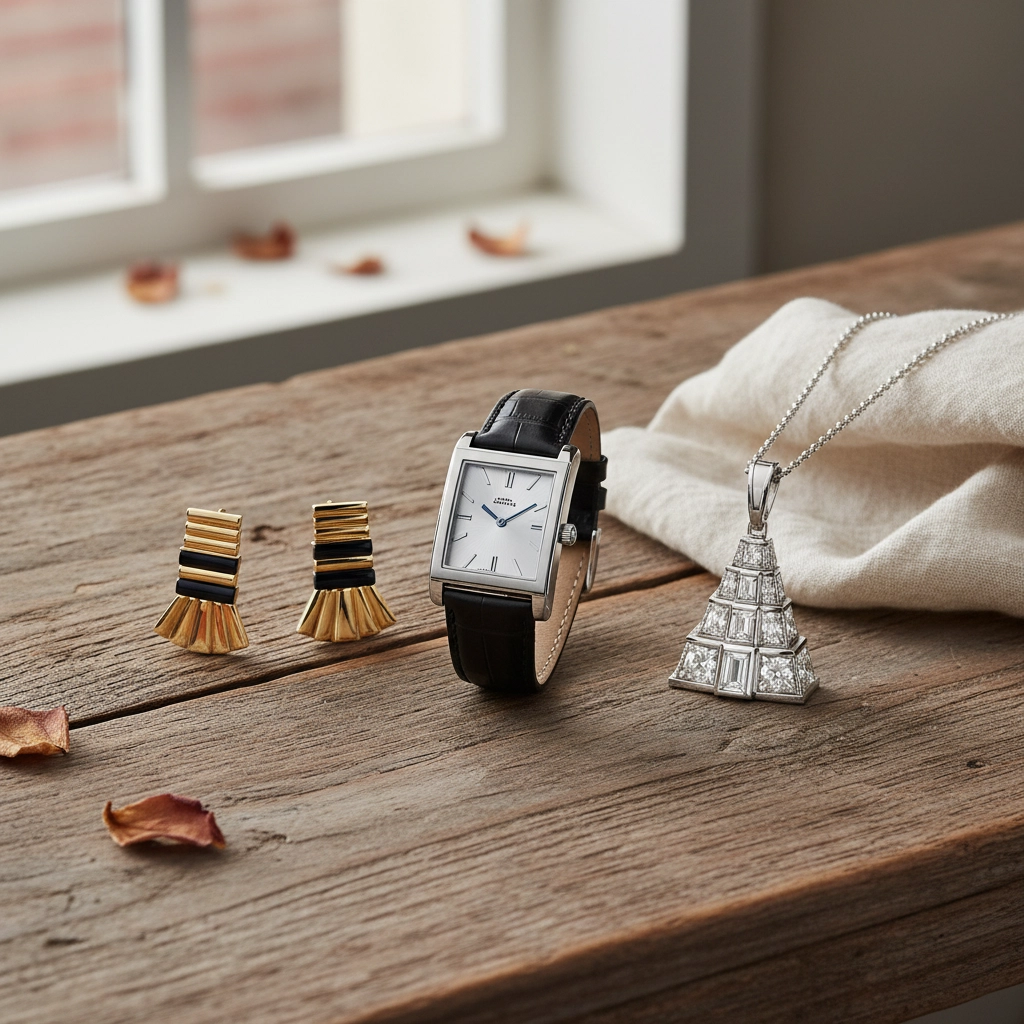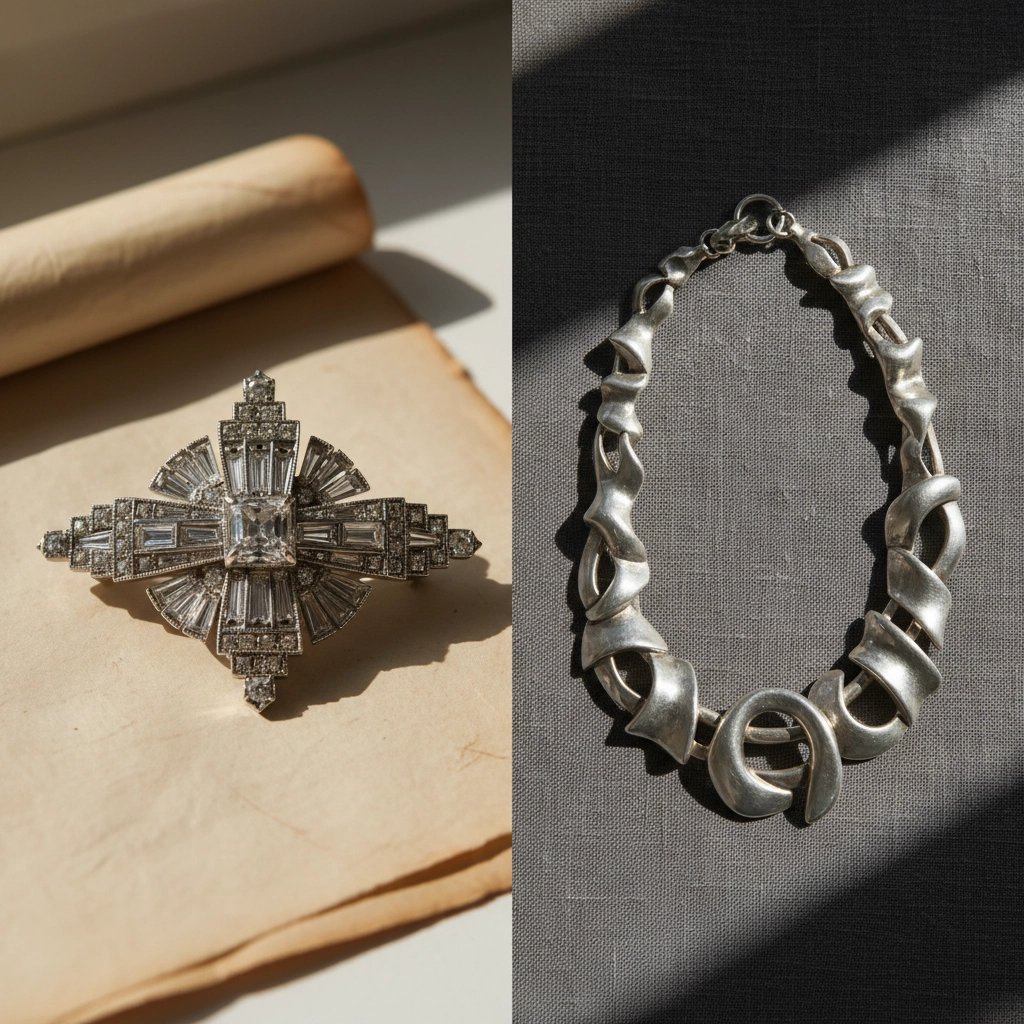Art Deco Era Recap: Week in Review, Surprising Facts, and a Peek at the Modern Age
What a week it's been diving deep into the Art Deco era! If you've been following along with me on this journey through one of jewelry's most revolutionary periods, you know we've covered some serious ground. From the glamorous origins to the lasting legacy, we've explored how this movement completely transformed not just how jewelry looked, but how people thought about wearing it.
Let me take you through what we discovered this week, share some fascinating details I couldn't fit into the earlier posts, and give you a sneak peek at where we're headed next week with the Modern Era series.
This Week's Art Deco Journey
We kicked off Monday with the origins of Art Deco, tracing how this bold new style emerged from the ashes of World War I. I still get goosebumps thinking about how jewelers in the 1920s threw out centuries of floral, romantic designs and said, "You know what? Let's make jewelry that looks like the future." The geometric patterns, the sharp lines, the way they embraced machines instead of fearing them: it was revolutionary.
Tuesday, we explored those iconic designs that still make collectors' hearts race today. The stepped patterns, the sunburst motifs, those incredible geometric cuts that made diamonds and gemstones look like they were carved from pure light. I mentioned how Art Deco jewelers were basically the first to say "symmetry is everything," and honestly, when you see a perfectly balanced Art Deco brooch, you understand why that philosophy stuck around.
Wednesday was all about the techniques and innovations that made it all possible. We talked about how platinum became the metal of choice, how new cutting methods transformed gemstones, and how mass production techniques started making beautiful jewelry accessible to more people than ever before. It wasn't just about the wealthy anymore: Art Deco wanted everyone to feel glamorous.

Thursday brought us to the legacy discussion, exploring how Art Deco's influence rippled through subsequent decades and continues to inspire designers today. Even now, when I see a contemporary piece with those clean geometric lines or that distinctive stepped pattern, I can trace its DNA right back to those revolutionary designers of the 1920s and '30s.
The Surprising Art Deco Facts I Couldn't Fit In
Here's where things get really interesting. While researching this series, I stumbled across some absolutely fascinating details about Art Deco jewelry that I just had to share with you.
The Cigarette Case Revolution: One of the most unexpectedly important Art Deco accessories was the cigarette case. Since smoking was not only socially acceptable but fashionable in the 1920s, these cases became canvases for the most intricate Art Deco designs. Jewelers like Cartier and Van Cleef & Arpels created cases with secret compartments, hidden watches, and gemstone patterns that rivaled their most expensive brooches. I've seen cases that are worth more today than some people's cars!
The "Tutti Frutti" Phenomenon: Cartier's famous "Tutti Frutti" style combined traditional Indian carving techniques with Art Deco sensibilities. What's wild is that the Cartier brothers literally traveled to India to source carved emeralds, rubies, and sapphires, then brought them back to Paris to set in geometric platinum mountings. The result was this incredible fusion that looked both ancient and futuristic at the same time.
Mystery Clocks Weren't Just Clocks: Cartier's mystery clocks from this era are legendary among collectors, but here's what most people don't know: they also made mystery jewelry. Brooches and pendants where gemstones appeared to float without visible settings, using the same crystal and engineering principles as their famous clocks. The technical skill required was absolutely mind-blowing.

The Jazz Age Color Explosion: While we think of Art Deco as sophisticated and monochromatic, jewelry from this era actually featured some of the boldest color combinations ever seen. Bright green jade paired with coral and onyx, turquoise mixed with diamonds and black enamel: jewelers were experimenting with color contrasts that would make a modern designer nervous. The key was balance and symmetry, which somehow made even the wildest combinations look sophisticated.
Hollywood's Secret Influence: Here's one that surprised me: many Art Deco jewelry designs were directly influenced by movie set designs. The geometric patterns we see in brooches and necklaces often echoed the backgrounds of popular films. Jewelers would literally study the sets of movies like "Metropolis" and incorporate those architectural elements into wearable pieces.
The Bakelite Breakthrough: While everyone talks about platinum and diamonds, one of the most important Art Deco innovations was the use of Bakelite: the first truly synthetic plastic. Suddenly, jewelry could be produced in colors that nature never provided. Bright orange, electric yellow, forest green: colors that complemented the era's bold fashion but would have been impossible to achieve with traditional materials.
What You're Probably Wearing Right Now
I bet if you look at your jewelry box or even what you're wearing right now, you'll find Art Deco influences. That watch with the rectangular face? Pure Art Deco. Those geometric earrings you picked up last month? They're channeling 1920s design principles. Even modern tennis bracelets can trace their lineage back to the Art Deco preference for linear, geometric arrangements of stones.
The movement was so foundational that it's almost impossible to find contemporary jewelry that doesn't owe something to those pioneering designers. They established principles: clean lines, geometric balance, the beauty of machine precision: that still guide jewelry design today.

Looking Ahead: The Modern Era Awaits
Now, here's where things get really exciting. Next week, we're diving into the Modern Era of jewelry, and trust me, it's going to be just as fascinating as our Art Deco journey, but in completely different ways.
If Art Deco was about embracing the machine age with geometric precision, the Modern Era was about questioning everything. What if jewelry didn't have to be precious metals and gemstones? What if it could be made from anything: steel, plastic, rubber, even paper? What if the most beautiful piece could also be the most affordable?
We're going to explore how World War II and its aftermath completely revolutionized jewelry design. Think about it: when materials like platinum were rationed for the war effort, jewelers had to get creative. They discovered silver alternatives, experimented with new alloys, and started questioning whether "precious" materials were really necessary for beautiful jewelry.
The Modern Era brought us minimalism before minimalism was cool. We'll look at how designers like Art Smith and Sam Kramer started creating jewelry that was more like wearable sculpture: bold, abstract pieces that made statements rather than just complementing outfits.
Technology played a huge role too. New manufacturing techniques meant jewelry could be mass-produced with precision that handcrafting couldn't match. But here's the paradox: at the same time, there was a counter-movement toward one-of-a-kind, handcrafted pieces that celebrated imperfection and individuality.

Color became democratized in ways the Art Deco designers could never have imagined. Synthetic gemstones, new enameling techniques, and plastic technologies meant that a piece could be bright purple, electric blue, or any shade you could dream up. Jewelry started reflecting the pop art movement, the space age, and changing social attitudes about self-expression.
We'll explore how jewelry became more casual, more personal, and paradoxically, more diverse than ever before. This was the era when men started wearing more adventurous jewelry again (think of the bold chains and statement pieces of the 1970s), when women began stacking and layering pieces in new ways, and when the very definition of "fine jewelry" expanded dramatically.
The Thread That Connects It All
What strikes me most about this journey from Art Deco through the Modern Era is how each generation of jewelers has built on what came before while completely revolutionizing it at the same time. The Art Deco designers took the romantic, naturalistic jewelry of the Edwardian era and transformed it into something that celebrated technology and precision. The Modern Era designers took that precision and asked, "But what if we break all the rules?"
Every piece tells a story: not just about the person wearing it, but about the moment in history when it was created, the technologies available, the social attitudes of the time, and the dreams of the designer who imagined it into existence.
Next week, we'll explore how those dreams evolved in the Modern Era, and I think you're going to be surprised by just how revolutionary and diverse this period really was. From minimalist sculptures to pop art explosions, from space-age materials to handcrafted rebellion: the Modern Era had it all.
Until then, take a closer look at your jewelry collection. I guarantee you'll start seeing the historical influences in new ways, and maybe you'll appreciate even more the incredible journey that brought each piece to your jewelry box.